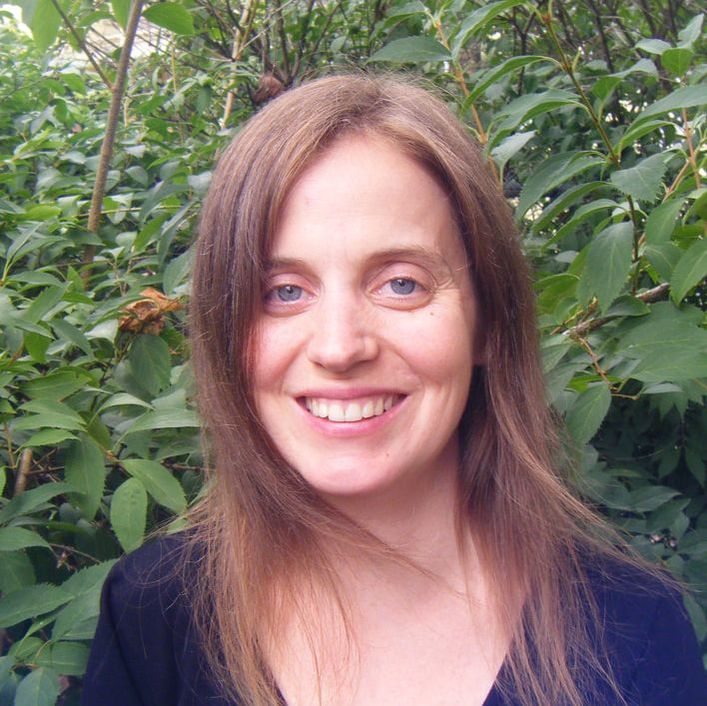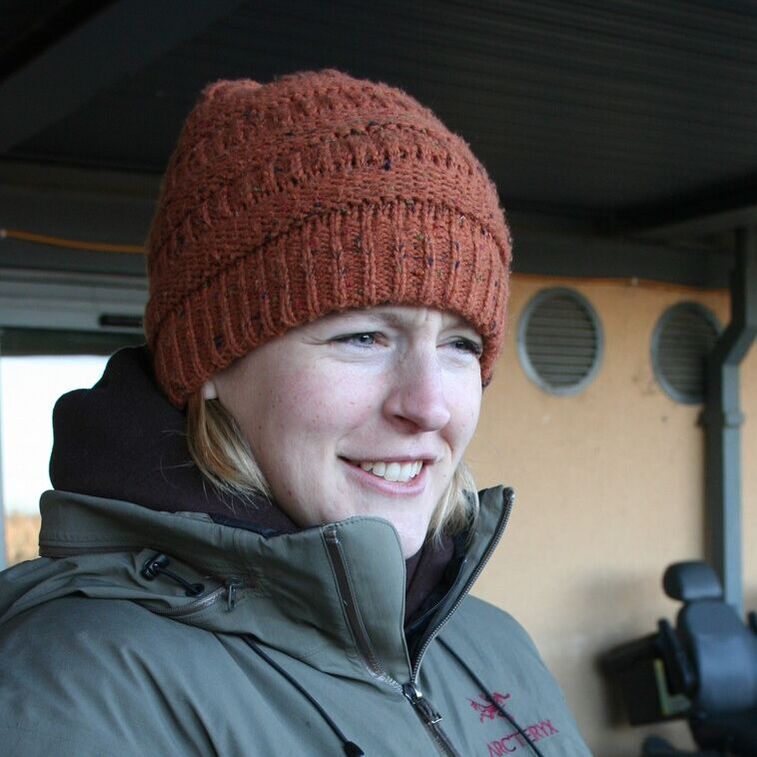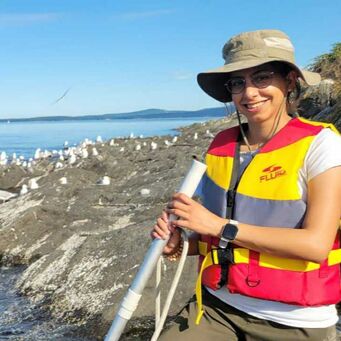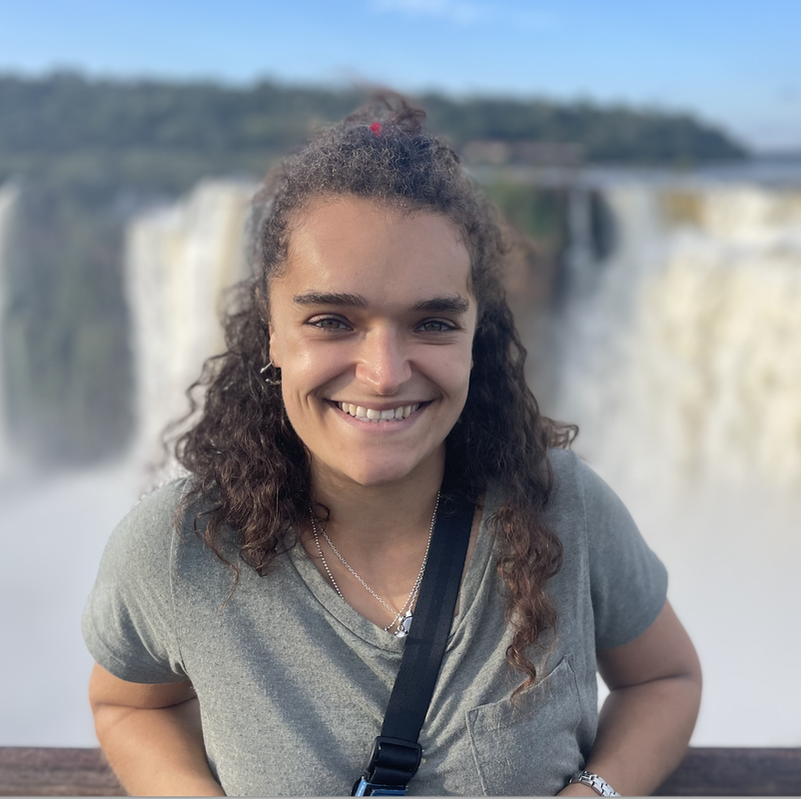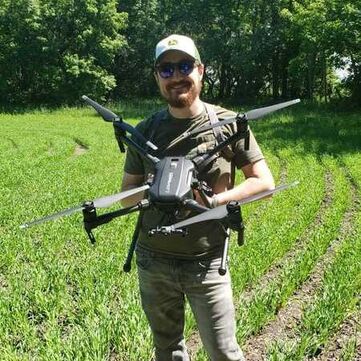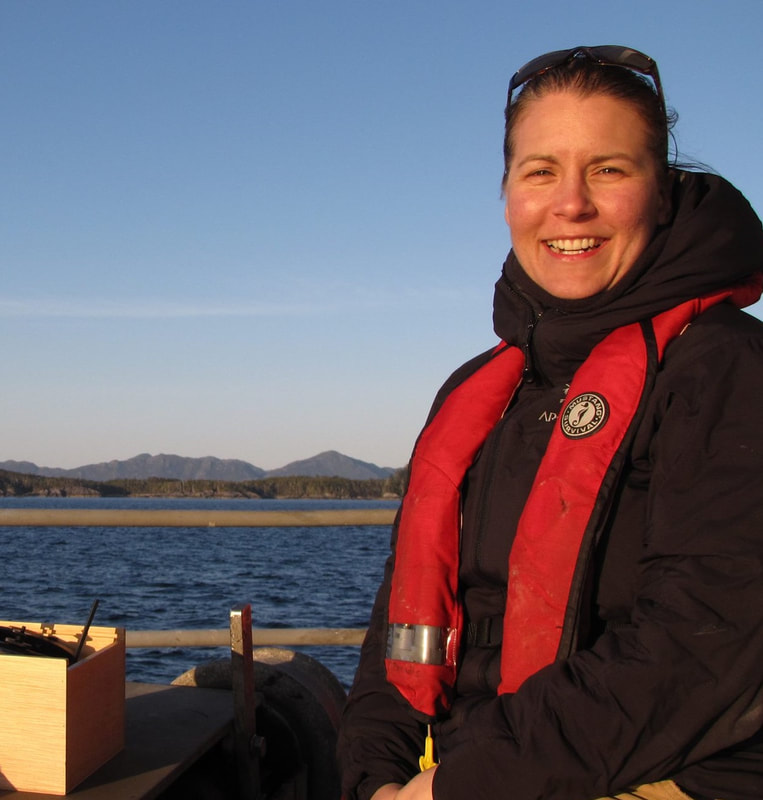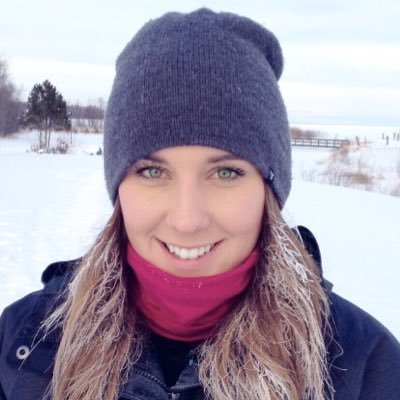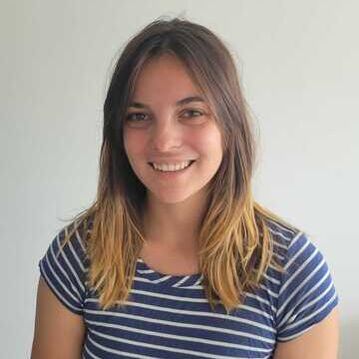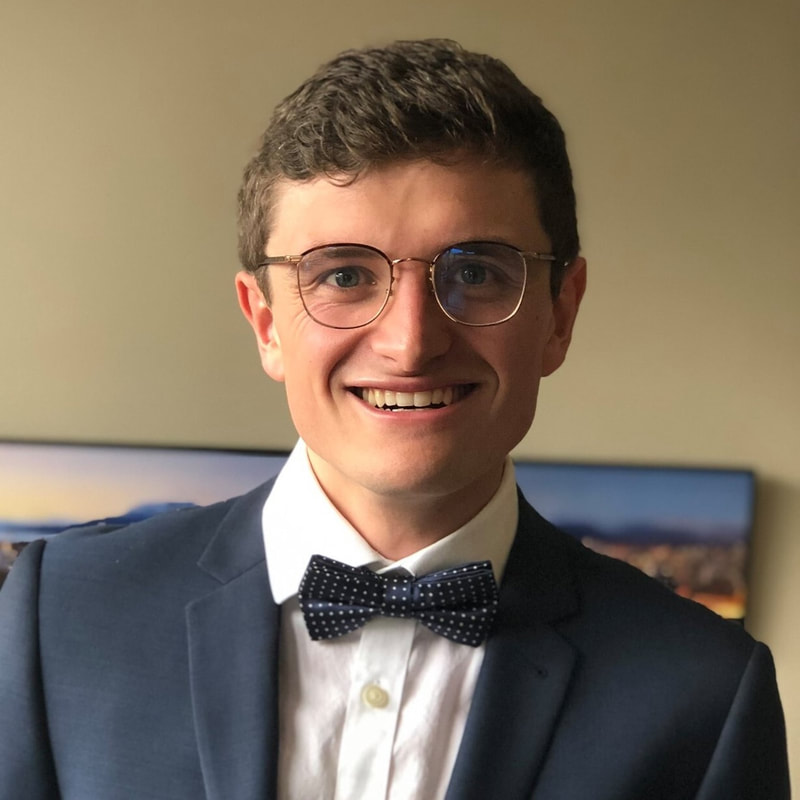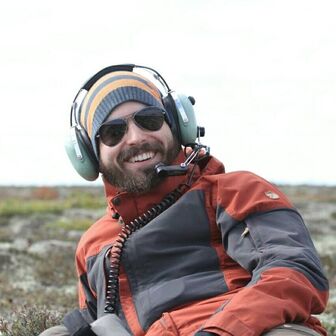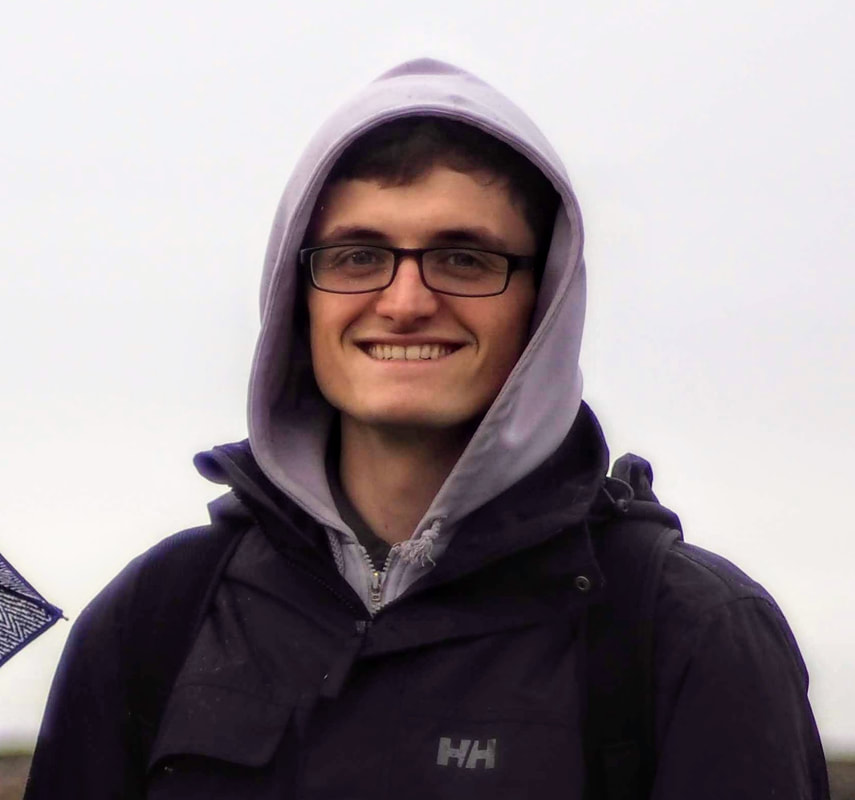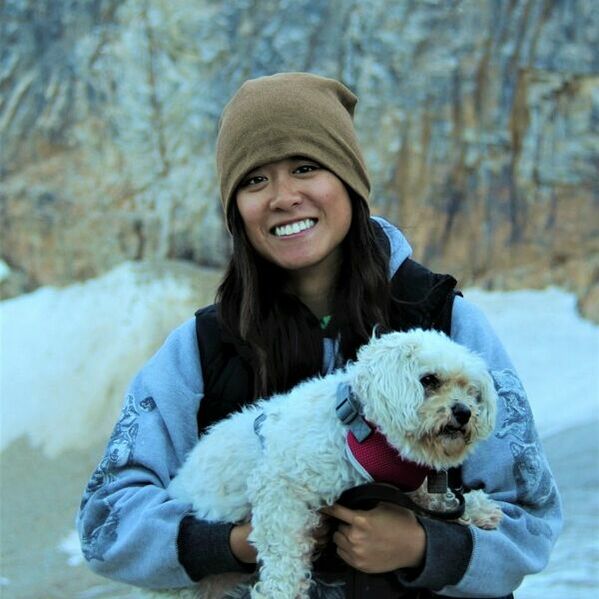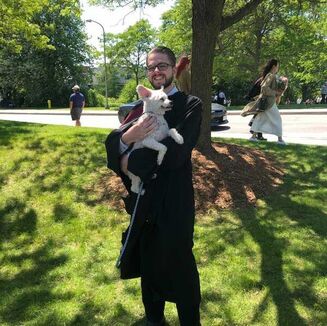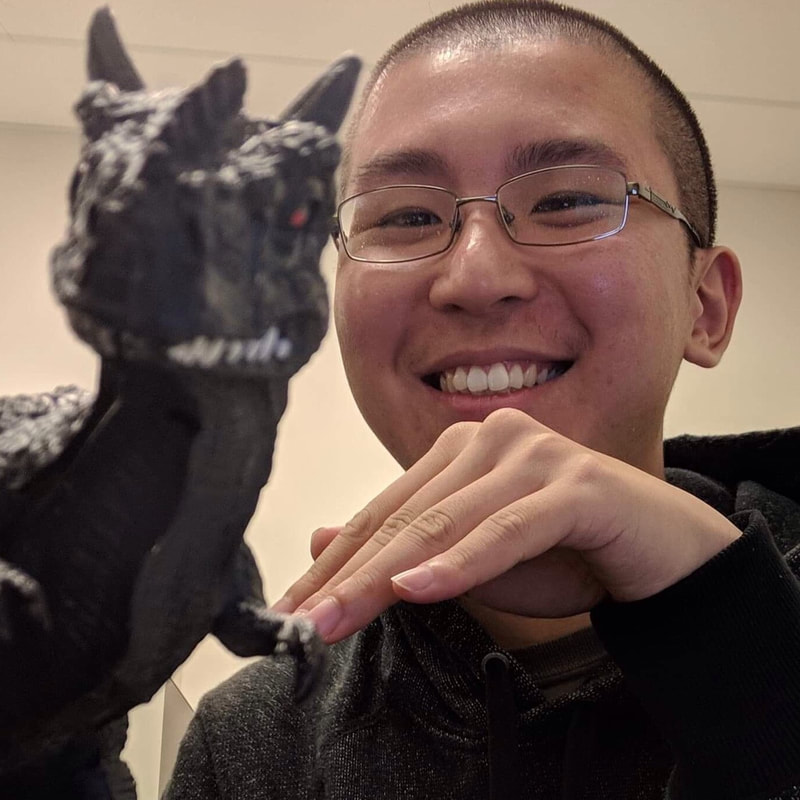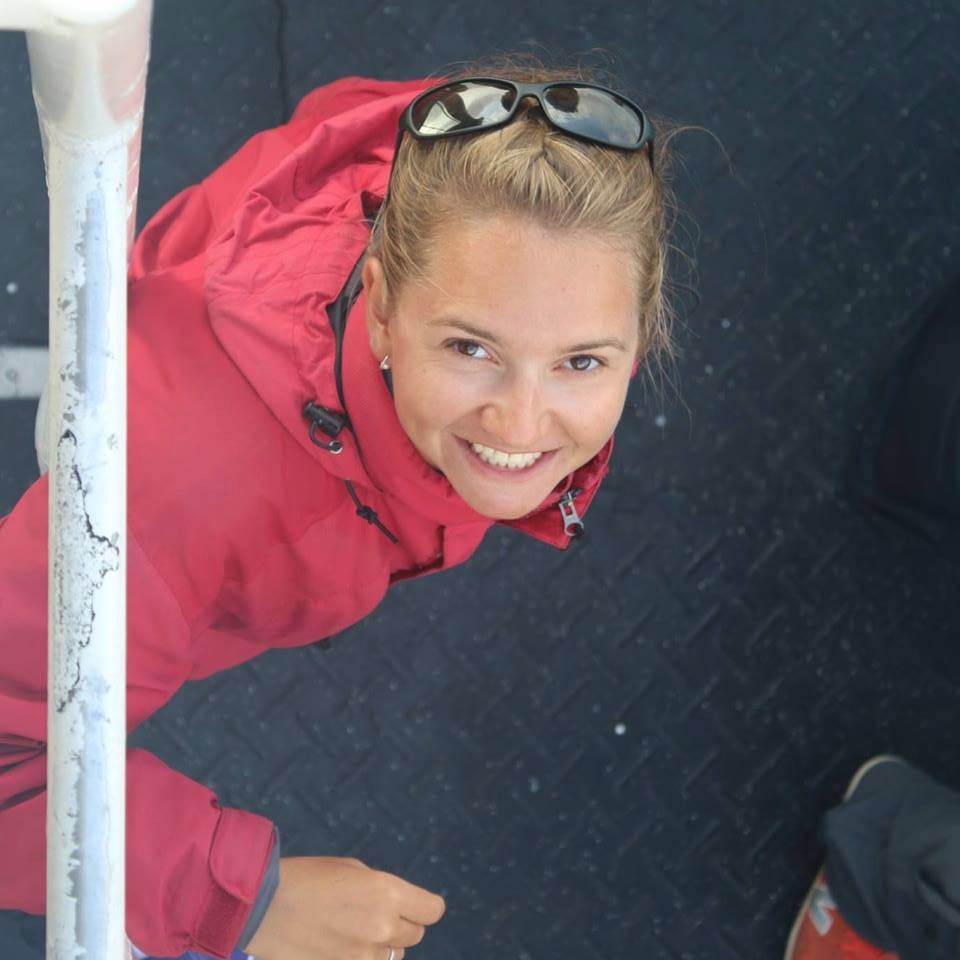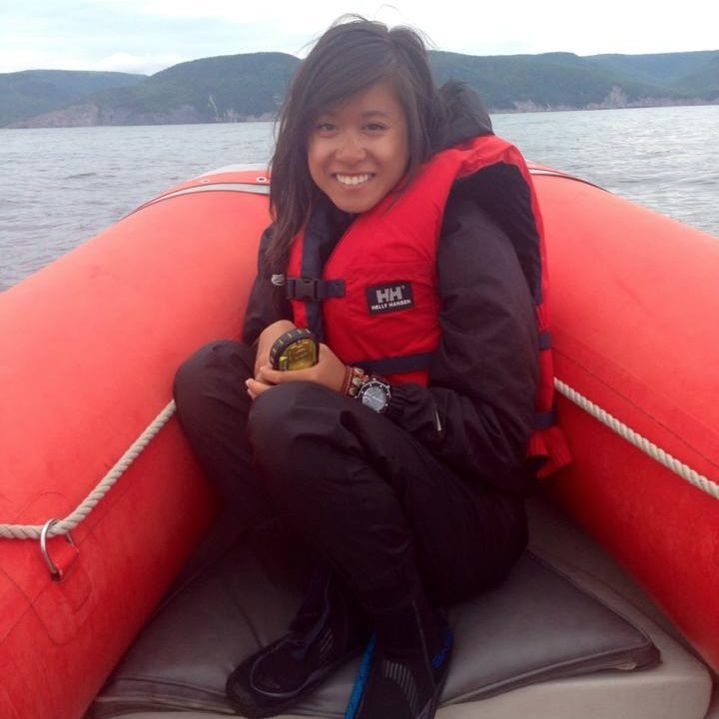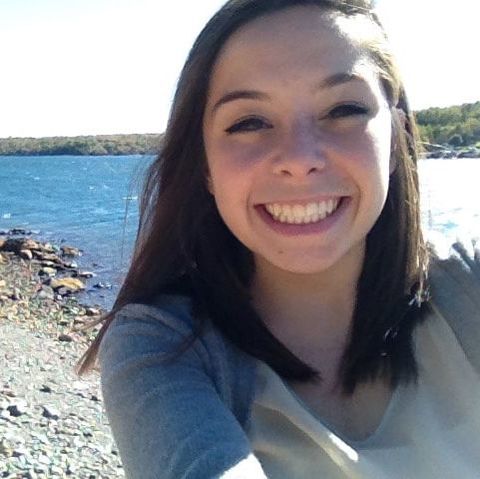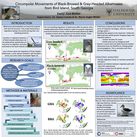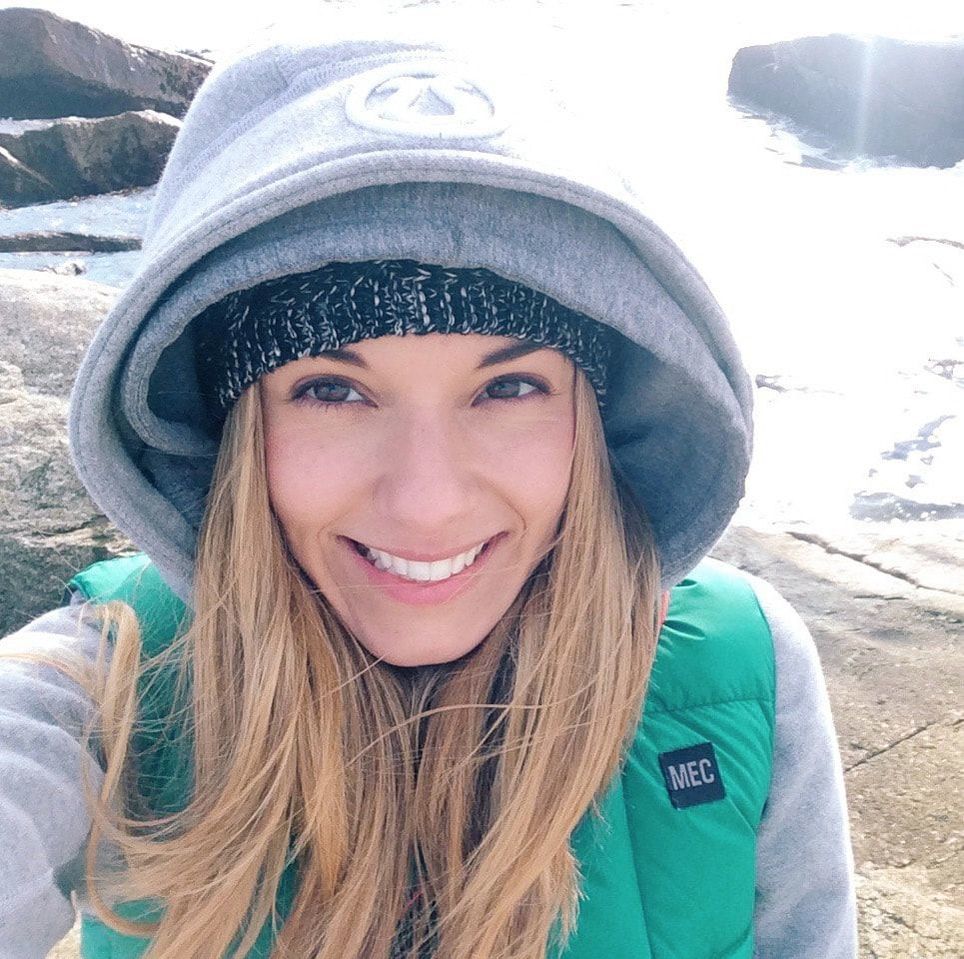Marie Auger-Méthé
Associate Professor
Department of Statistics, Institute for the Oceans & Fisheries University of British Columbia [email protected] I am a statistical ecologist with a passion for polar and marine ecosystems. I love to tackle difficult problems and much of my work involves developing statistical tools that help answer challenging ecological and conservation questions. While my interests are diverse, I am fascinated by animal behaviour and much of my work has focused on developing statistical tools to understand the movement strategies used by animals to find resources and cope with the dynamics of their habitat. I am currently focused on developing statistical methods to help identify important habitats for animals, understanding the multifaceted ways humans impact animals, and co-leading an international collaborating research team that develops statistical models to help improve the health of humans and non-human animals.
|
Postdoctoral fellow
Dr. Courtney Shuert
Institute for the Oceans & Fisheries
Courtney has worked on a variety of marine species, and now focus on understanding the migration behaviour of narwhals, and how it has changed over the past three decades. She works in close collaboration with WWF Canada and Dr. Nigel Hussey from the University of Windsor. She is co-supervised by Dr. Marianne Marcoux (Fisheries & Oceans Canada).
|
PhD students
Shabnam Shadloo
PhD Student in Oceans & Fisheries
Institute for the Oceans & Fisheries Having previously studied mammalian ecology, I am now working on avian species. Under the co-supervision of Dr. Amy Wilson, I am studying glaucous-winged gulls with a specific focus on the population that nests on Mandarte Island. The main goal of my research is to identify the impacts of human activities on these gulls, particularly in relation to their behaviour and susceptibility to diseases. To predict hidden behaviours from movement data, I am using hidden Markov models. An important aspect of my research involves determining whether proximity to human settlements increases the prevalence of diseases such as toxoplasmosis gondii in seabirds.
|
Fanny Dupont
PhD Student in Statistics
Department of Statistics I am french and interested in the interface between ecology and statistics. I am currently doing a PhD, co-supervised by Dr. Marianne Marcoux (Fisheries & Oceans Canada), developing statistical methodology to model complex behaviours in narwhals. More precisely, I am interested in developing hidden Markov models that pinpoint the effects of ships on narwhals. I want to identify at what distance narwhals start modifying their behaviour in the presence of ships, and the areas where narwhals are most sensitive to ship disturbance.
|
Evan Sidrow
PhD Candidate in Statistics
Department of Statistics Evan is doing a PhD developing statistical methodology to help analyze a broad range of data, including high-frequency biotelemetry data. He is interested in developing hidden Markov models that help identify behavioural states, and parallel tempering methods to increase the efficiency of complex model fitting. He works on a large collaborative project trying to identify why southern resident killers whales are in worse condition than their neighbours, the northern residents. He is co-supervised by Dr. Nancy Heckman.
|
Joe Bottoms
PhD Candidate in the Ecosystem Science and Management
Department of Ecosystem Science and Management University of Northern British Columbia Joe is studying the thermal and spatial ecology of Arctic grayling in Northern BC. He is using mixed methods including snorkel surveys, thermal drone mapping, and both radio and acoustic telemetry to study how Arctic graylings use their fine and broad-scale thermal habitats in the Parsnip watershed. His PhD thesis examines how these inferences can be used in conservation planning across the larger riverine and watershed scales. His work in SERG has focused on spatial capture-recapture modeling and its adaptation to dendritic river networks and how it can be used to make inferences about resource selection in acoustic telemetry datasets with spatial covariates. He is studying at the University of Northern British Columbia with his primary supervisor Dr. Eduardo Martins.
|
|
|
Rowenna Gryba
Rowenna's PhD is on developing methods to quantitatively include Indigenous Knowledge (IK) into animal movement and habitat models. To address this she is focusing on ringed seals, spotted seals and bearded seals and their behaviour and habitat use in the Beaufort, Chukchi and Bering Seas. Rowenna has been conducting IK interviews in Arctic communities in Alaska to document the vast IK that exists in this region. She will then use a Bayesian statistical framework to equally include the IK and satellite movement data for these species to identify behaviour, such as foraging and resting, and identify suitable habitat. Rowenna hopes that through these methods IK can be included into modelling approaches in a new and meaningful way providing more fully informed models and understanding of animal movement and habitat use. She is co-supervised by Dr. Greg Henry.
|
Katie Florko
Katie is studying Arctic marine mammal space-use, predator-prey dynamics, and fitness under changing seascapes. She will test empirical ecological questions and identify critical habitat by developing models and collaborating with communities in Southern Hudson Bay to help incorporate local priorities in wildlife management. Katie will test the landscape of fear hypothesis, which predicts that predator (polar bear) space-use will indirectly influence prey (ringed seal) space-use, where prey avoid predator distribution on the seascape. She will model the space-use of polar bear and ringed seal, and how the predator-prey relationship is affected by shifts in sea ice regime. She will also investigate the temporal effects of a poor-ice-year on the fitness and body condition of ringed seals. In addition to identifying future important areas for important Arctic marine mammals, her research will provide insights on the breadth of impact of a poor-ice year, which is essential for proactive management and conservation.
|
BSc student
Jade Baanstra
BSc student in Mathematics
Institute for the Oceans & Fisheries Jade is a fourth-year undergraduate student majoring in mathematics. She has been working with the Statistical Ecology Research Group since early 2022. Jade's research delves into the behaviour of glaucous-winged gulls and explores how the presence of the parasite Toxoplasmosis gondii influences their behaviour. She hopes to further her studies in statistical ecology with a master’s program at UBC.
|
Alumni
Postdoctoral fellow
Dr. Joe Watson
Department of Statistics
Joe specializes in the analysis of spatio-temporal data. In particular he uses Gaussian processes (and fast approximations of) to capture hidden spatial and temporal trends. His focus is on modelling problems where the data have been sampled preferentially – that is, when the observations are sampled at locations that depend stochastically on the value of the hidden spatio-temporal field itself. He has developed methods to model the migration of Chinook salmon using acoustic detection data, as well as fisheries models that account for hook competition (fish competing for a limited amount of bait on the hooks). His work was in collaboration with a broad range of researchers, including Dr. Andrew Edwards (Fisheries & Oceans Canada).
|
PhD students
Ron TogunovPhD in Zoology
Institute for the Oceans & Fisheries Ron PhD focused on the foraging behaviour of polar bears, and the environmental conditions that are required for predation. He develop hidden Markov models to identify foraging events and modelling their relationship to environmental factors such as sea ice concentration, ice drift, wind speeds, and presence of industrial noise. He will also map areas where habitats critical to foraging are at risk, and link foraging behaviour and environmental conditions to fitness consequences to polar bears. The importance of foraging makes it a reliable metric from which to model species distribution. His research will help develop species distribution modelling techniques, expand ecological understanding of top Arctic predators, aid conservation and management, and can help improve livelihood in Northern communities.
|
Joe Watson
PhD in Statistics
Department of Statistics Joe specialized in the analysis of spatio-temporal data. In particular he used Gaussian processes (and fast approximations of) to capture hidden spatial and temporal trends. His focus was on modeling problems where the data have been sampled preferentially – that is, when the observations are sampled at locations that depend stochastically on the value of the hidden spatio-temporal field itself. Without properly adjusting for a preferential sampling process, subsequent inference and prediction will be biased (and confidently so...). Unfortunately this fact has largely been ignored by the statistical community in such applications. Therefore he developed user-friendly methodologies to help researchers address these issues. He started his work in environmental monitoring applications, and brought his methodologies into the field of statistical ecology to help adjust for the preferential sampling that is often present in ‘citizen science’ data. He was co-supervised by Dr. Jim Zidek.
|
MSc students
Joanna Wong
MSc in Oceans & Fisheries
Institute for the Oceans & Fisheries Joanna was studying the migratory connectivity of Arctic tern breeding colonies in Nova Scotia, Northern Hudson Bay, Central Canadian Arctic, and Alaska. Using geolocators and advanced statistical movement analyses, Joanna mapped individual routes post-breeding, and looked at overlaps and factors that influenced migration patterns. As the longest migrating species in the animal kingdom, Arctic terns play an important role in regulating prey abundance and delivering nutrient inputs across distant areas. Joanna’s research helps identify key sites and quantify the marine areas required to conserve this species. She was co-supervised by Dr. Mark Mallory.
|
Ian Murphy
MSc in Statistics
Department of Statistics Ian developed methods to improve the capacity of marine ecologists to identify the phases of whale dives. In particular, he created a definition of the bottom phase that is informed by statistical models and data, rather than chosen based on arbitrary thresholds. He worked on a large collaborative project trying to identify why southern resident killers whales are in worse condition than their neighbours, the northern residents. He was co-supervised by Dr. Nancy Heckman.
|
|
|
Sarah Dier-McCombMSc in Zoology
Institute for the Oceans & Fisheries Using movement and physiological data, Sarah investigated foraging efficiency and winter habitat of Gentoo penguin and how it relates to their reproductive behaviour and physiological condition. This research will advanced our understanding of the impacts of foraging and diving behaviour on breeding participation and the interplay between animal physiology and diving strategies.
|
Graduate student assistants
Peiyuan (Gary) Zhu
MSc student
Department of Statistics Gary is thinking of creative ways of using raw data in fishery stock assessment as opposed to traditional way based on calculated indices. He is also coming up with population models that captures the variation of sex ratio of Pacific Ocean Perch. He also work with Drs. Alexandre Bouchard-Côté and Trevor Campbell to develop Bayesian computational software for ecologists and other data-intensive biological research.
|
BSc honours students
Sarah Dier-McCombBSc honours in marine biology
Department of Biology (Dalhousie University) Sarah investigates the location of long-finned pilot whale behaviour off the coast of Cape Breton, Nova Scotia, Canada. Through R, ArcGIS, and GeoDa she is comparing the behaviour locations from 12 years of data to assess the consistency of feeding and resting locations along the coast. Sarah is co-supervised by Dr. Hal Whitehead.
|
|
Joanna is studying the accuracy of laser photogrammetry by measuring dorsal-fin dimensions of long-finned pilot whales in Cape Breton, Nova Scotia. By attaching two parallel lasers to a camera, a scale is projected onto the photographed whale, and linkages may be made between dorsal base lengths and the sex of an individual. Pilot whales have interesting social structure, and she is also using photo analysis to investigate hypotheses about leaders within a cluster. Joanna is co-supervised by Dr. Hal Whitehead.
|
|
Emily is modeling the spatial ecology of black-browed and grey-headed albatrosses during their non-breeding periods in the Southern Ocean, and linking individual variation in migratory behaviour to oceanographic conditions, physiological state, and sex. Emily is applying advanced state-space models to geolocation data. She is co-supervised by Dr. Glenn Crossin.
|
|
Joana is studying the changes in the distribution of long-finned pilot whales off the western coast of Cape Breton Island, Nova Scotia. She uses ArcGIS to visually compare GPS data from pilot whale encounters in 2003 and 2004 to data collected in 2013 and 2014. The mean distance of pilot whale encounters to the nearest shore and to the harbour are compared for each year in order to assess whether environmental factors or whale watching pressures are involved in the observed changes in distribution. Joana is co-supervised by Dr. Hal Whitehead.
|
